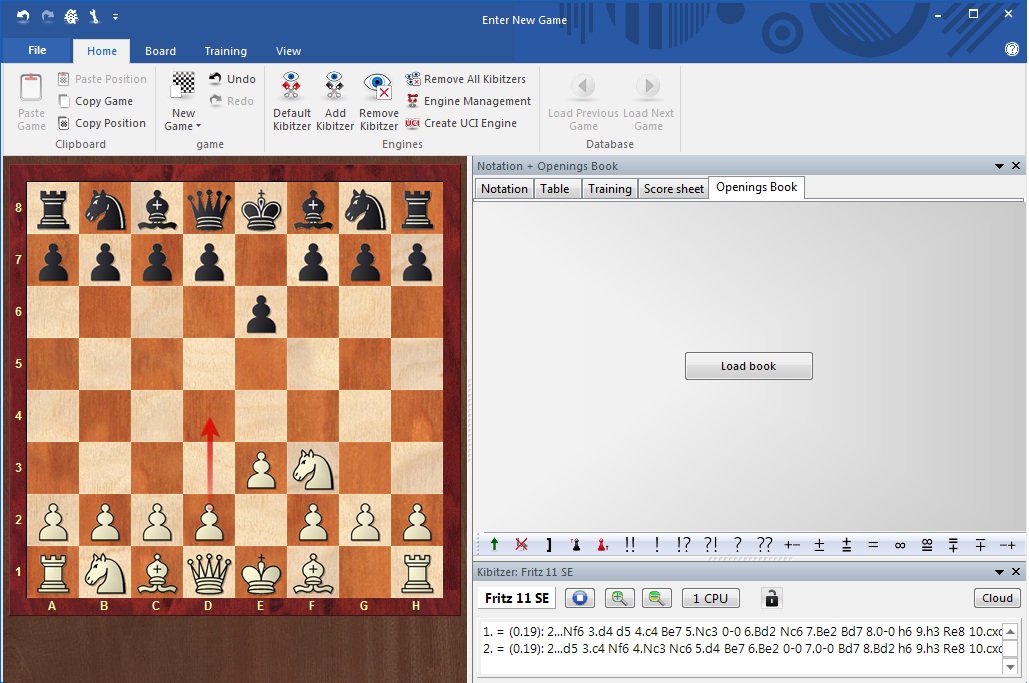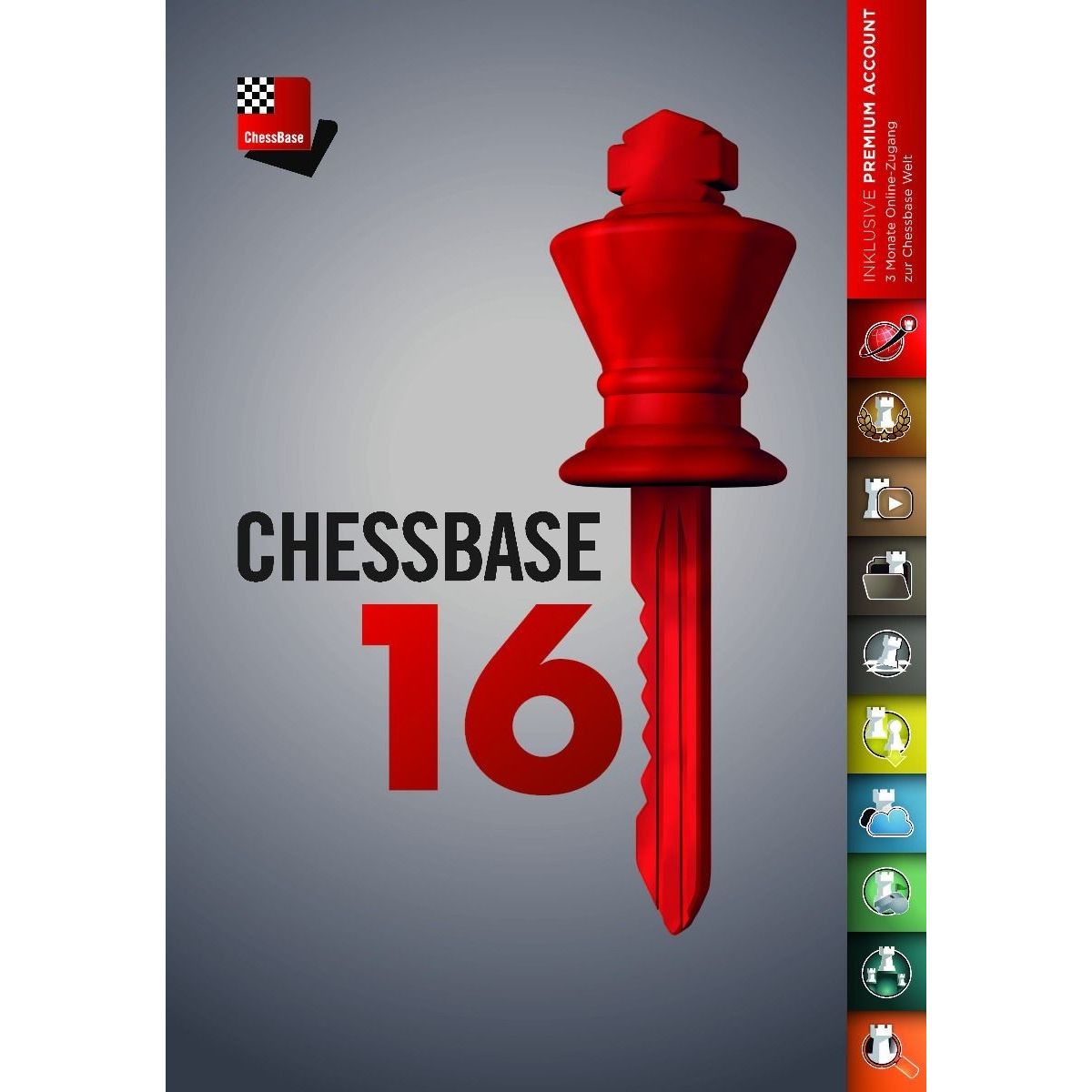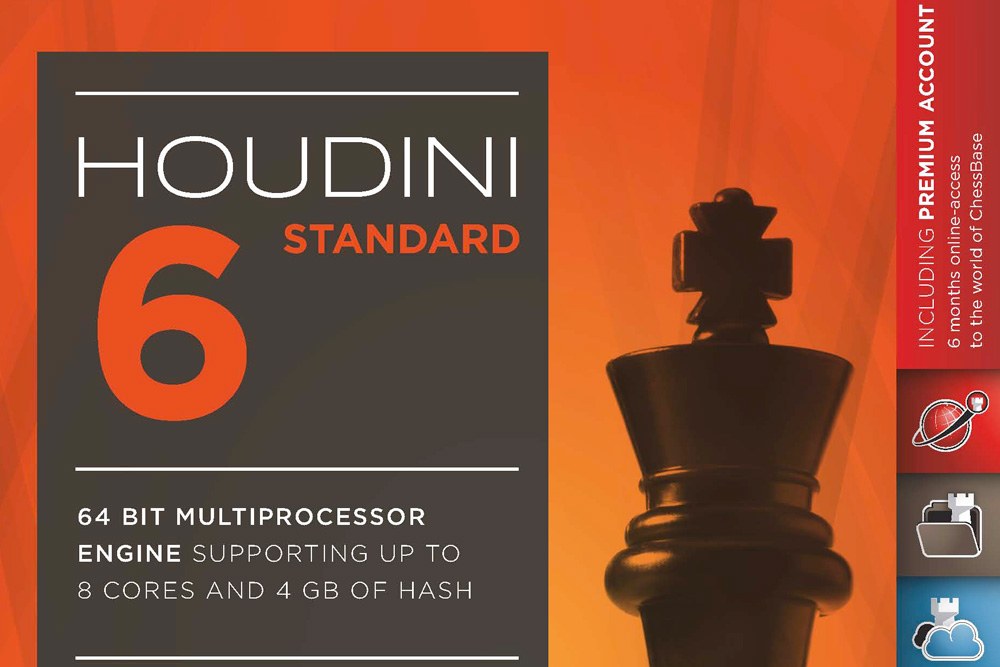Chessbase 10
I’ve been using ChessBase for so long as a study and research tool that I often forget how much danged fun it can be. Bear with me as I try to walk you through a tangled labyrinth of seeming random, but closely connected, thoughts.
I was thumbing through an old chess strategy book looking for inspiration; I needed a topic for a blog post. My eyes fell upon the old tip that a Bishop pair is often better than a Knight pair in endgames with pawns on both sides of the board. I will definitely use that as material for a blog post — but not today.
While I was using ChessBase 10 to find games in which two Bishops faced off against two Knights in endgames in which there are pawns on both sides of the board, I suddenly realized that a step-by-step tutorial on setting up that ChessBase search would be a great topic of a blog post. It really would be — just not today.
Why not either or those two topics today? Because I ran across a game which really had me scratching my head. I tried to walk away from this game, I really did, but (like Pacino in Godfather III) it just kept pulling me back in. That happens sometimes when you’re using ChessBase 10: you start out headed in one direction but wind up going somewhere else entirely, simply because a game is just that interesting.
ChessBase: Berichterstattungen zum Thema Schach - Turniere, Meisterschaften, Portraits, Interviews, Weltmeisterschaften, Produktvorstellungen und mehr.
Here’s what happened. I launched a search for the aforementioned Bishop pair vs. Knight pair ending, and as I scrolled down the resulting big list of games (about 7,000 of them, which ChessBase found in about ninety seconds), one caught my eye for some odd reason. I think it was the fact that White had the Bishop pair but still lost the game, coupled with the fact that White was a rated 2100+ Master while Black was (apparently) unrated.
Chess Assistant 10
- ChessBase 15 - Download. ChessBase is a personal, stand-alone chess database that has become the standard throughout the world. Everyone uses ChessBase, from the World Champion to the amateur next door. It is the program of choice for anyone who loves the game and wants to know more about it.
- ChessBase: Reports about chess - tournaments, championships, portraits, interviews, World Championships, product launches and more.
- Play Chess Online for free. Create a free ChessBase Account to get additional functions on all ChessBase web sites. For professional use subscribe to a Premium Account.
You can find tons of games and information in a database, but unless a game is annotated it’s sometimes difficult to know why a game ended as it did. Was one player in time trouble? Was it a late-night round, maybe the last at the end of a very long, busy day? Was he just seeing phantoms? It’s often fun to try to crawl into the heads of the players and try to figure out what the heck was going on.
Now I fully realize that this game was played in a Junior championship, but that doesn’t matter; White’s rated 2103, so I don’t care if he’s four years old — he definitely has some chops. So we really can’t blow this one off due to age; we’ll instead need to really look hard at this game to figure out what happened :
Leal,Joao Vitor (2103) – Esplana Huaman,Christian [E38]
Pan American-ch U16 Matinhos (6), 1999
1.d4 Nf6 2.c4 e6 3.Nc3 Bb4 4.Qc2 c5 5.dxc5 Na6 6.a3 Bxc3+ 7.Qxc3 Nxc5 8.b4 Nce4 9.Qc2 d5 10.f3 Nd6 11.c5 Nf5 12.e3 0-0 13.Bd3 Nh4 14.Bb2 Re8 15.Qf2 Ng6 16.Ne2 e5 17.0-0 Bd7 18.Ng3 b6 19.Nf5 Bxf5 20.Bxf5 bxc5 21.bxc5 Ne7 22.Bd3 Nc6 23.Bb5 Qc7 24.Rac1 Rab8 25.Ba4 Re6 26.Rfd1 Na5 27.Bc3 Nc4 28.e4 dxe4 29.Bb4 Na5 30.fxe4 Nc6
It’s been a see-saw game so far, with neither player holding any great advantage; the players have teetered back and forth on both sides of “dead even” throughout the game up ’til now.

31.Qe1 Rd8
Here’s where it starts getting interesting. White’s big conundrum is to figure out how to exploit his passed pawn; Black has it very well blockaded. Black, on the other hand, needs to keep that c-pawn bottled up, so you’d imagine that he wouldn’t even think about trading material.
32.Bb3
This drives the Black Rook from e6, meaning that it no longer controls d6.
32…Re7 33.Rxd8+
I reckoned that White would play 33.Rd6 here. Now Black can’t play 33…Rxd6 because of 34.cxd6 — a really hideous fork.
33…Qxd8 34.Rd1 Rd7 35.Rd6??

Position after 35.Rd6
And now it’s just plain weird. This move loses the game — it doesn’t work anymore because 35…Rxd6 36.cxd6 doesn’t fork the Black Rook and Queen. If White was going to do this (and I believe it was his intent; he just somehow lost track of why he was doing it), he should have done it a couple of moves ago. If White had instead played 35.Rxd7 Qxd7 he could just offer a draw and everyone could go home. White does have the advantage of the Bishop pair vs. the Knight pair, but it’s hard to picture either player making any real progress without a protracted struggle and/or a helpful blunder.
35…Rxd6 36.cxd6
See? This is what I don’t understand about White’s thinking. Yes, the c-pawn has now become a d-pawn and has managed to “end run” the blockading Knight, but Black’s Knights control both d7 and d8, so no promotion is in the pawn’s immediate future. Furthermore Black’s Queen is now a free agent while White’s Queen is presently tied to the defense of the e4-pawn.
36…Qb6+ 37.Qf2 Qxf2+ 38.Kxf2 Nxb4
Nice. Black trades a Knight for a pesky Bishop. If 38…Nxe4+ 39.Ke3 Nxd6 40.Bxd6 Nd4 41.Bxf7+ Kxf7 42.Ke4 Ke6 43.Bxe5 it’s dead even, although White is theoretically better because of his Bishop.
39.d7??
White should have played 39.axb4. After 39…Nxe4+ it’s still a mess, but my money’s on Black’s extra pawn and his Kingside pawn majority eventually winning the day, although White still has the chance to go down swinging.

39…Nc6 0-1
White just lost a minor piece for nothing and his passed pawn is going next, so he quits on the spot. It’s just amazing to me how even a master-level player can find a good idea, then become so fixated on it (as I presume happened here) that he fails to notice that a changed game condition renders the original idea null and void.
Perhaps you can understand now why this blog post ended up so far removed from my original intent for it. This game really captivated me and I wanted to share it with you. It’s interesting to note again that you can find plenty of games in using a “data mining” chess program like ChessBase 10, but it’s not always possible to understand why a game is played a particular way unless you really take some time with it (as I did here) and try to figure out what a player was thinking in a given critical position.
As I said earlier, I was able to find more than 7,000 games (from a database of over 4,000,000) which matched my search criteria, and did it in about ninety seconds using ChessBase 10. Get more from your chess study time using ChessBase 10, available now from ChessCentral, the leader in cutting-edge chess.
Have fun! — Steve
Filed under: Chess instruction, Chess Software, Other Chess Information | Tagged: annotated chess game, Bishop vs Knight endgame, chess, chess advice, chess database, chess endgame, chess improvement, Chess instruction, chess products, chess program, Chess Software, chess tips, chess training, chessbase, ChessBase 10, chesscentral, Steve Lopez | 1 Comment »
For me, as a professional chess coach, the emergency of every new program for processing chess data is a big event.
It is neccessary to study the program carefully to see what advantages it has compared to previous versions of the same program and also to similar programs that already exist on the market. Before, this was a relatively easy task because then new programs brought just a few new possibilities and it was not hard to compare them. Modern programs, like Chessbase 11 has such a large number of options that it is practically very difficult to know all them. That’s why in this article I will only mention the options that are especially useful for a chess coach and a practical player (and will mention only those that are, in my opinion, the most important).
I have been using Chessbase programs from their first “Atari” version and I know well the possibilities of these programs (Chessbase and Fritz). The version Chessbase 10 that I have been using until now is, in my opinion, an excellent chess program (especially with the new update): the player has practically everything that is needed for tournament preparation as well as for abstract preparation. The options are simple and a user has no problems to use them. That’s why I was a little surprised when heard that Chessbase prepared a new version of this program, Chessbase 11. And, of course, professional curiosity forced me to try to understand what is that what is new in this program and I did this using a beta version of the program (which I also did before watching the previous beta versions). So, this summary deals with the beta version of the program (Beta version 2a because the program has not been published on English yet) and I will mention only some of the most important new options of the program. Detailed analysis of the program (all its options) will follow later when the program is published.
When Fritz 12 was published the most often heard remark was that the new interface was a limiting factor because a big number of users simply didn’t want to learn how to use this program properly. This is same when we buy a new car (which is better than our previous car) and, of course, we need some time to learn options on the instrument panel. And nobody complains saying that their old car was better. That’s why I do not take this remark as a serious one especially because of the fact that a user gets used on their new environment only after a few days and this is because it is natural, intuitive and simple. Chessbase 11 is based on the new Microsoft Office based interface just as Fritz 12 and I can say that it is very easy to manage with the new environment. I had no problems when using it for the first time.
It is not needed to work for a long time with this program to understand its big advantages compared to the previous version (Chessbase 10 which is, to remind readers, very good). Though CB 11 has a large number of new possibilities I will mention just those that are most important and that are intended to be used by players and chess coach.
The first thing we can see in the program is that the icons of bases are changed and that there is a much bigger number of icons. This is, of course, important because now we can differentiate between a bigger number of bases (the author of this text strived for this as an addition to the version of Chessbase 10).
Chessbase Windows 10
Maybe there will be users that will not consider the change of icons to be important but I would like to say that this helps us make various bases which is very important for players and especially for a coach.
For me, the most important and most interesting is the following new option:
Novelty annotation
If we want to see in what moment in a game was played a novelty e.g. on what move the game was different to the all other played games, we can get the answer for a very short time just by clicking on one icon. And not only this, we get two more answers: What variation is relevant for the variation that we are watching as well as predecessor of this game. And thereby the criteria for defining a variation as a relevant one in this program is different – it is not the principle of the biggest number of played games with this variation any more (which very often cannot give us a correct answer) but it is the number of games played by good players recently. And if we want a game with moves that are most similar to the moves of our own game then we can see it by using the option predecessor. So, with only one click we get almost all the relevant date about opening! This is really a revolutionary novelty and its simplicity and speed are amazing!
The next very important difference to the previous version of the program is that when we look for Reference games now we also get a possibility to see what variation is the main variation e.g. what variation is most often played on top level. This option is significant because when we use a base with a large number of games the pure fact that some move is played many times does not mean much. Much more important is the fact if that move was played on top level.
It should be mentioned that in this version of the program already known options are improved much – I will only mention some of them:
Chessbase 10 Review
The repertoire database is completely revised which helps players prepare their opening repertoires much simpler and easier.
The functions “Opening report” and “Dossier” are improved much and there is no need to say how much these options are important both for a player and coach.
Chessbase 10 Release
For a chess coach most important is to prepare questions of high quality for their students and this version of Chessbase enables them to do that much simpler and easier than the previous versions.

It is also important that the users of this program will always have database remained up-to-date.
This program enables a user to increase or decrease the number of CPU (as in Fritz 12) – from the maximal number that our PC has to only one.
These are only some of the novelties in Chessbase 11 that makes it (besides other well-known options) the best program on the market.

Chessbase 12 Windows 10
The price and way of ordering this program can be seen on the site http://www.chessbase.com.